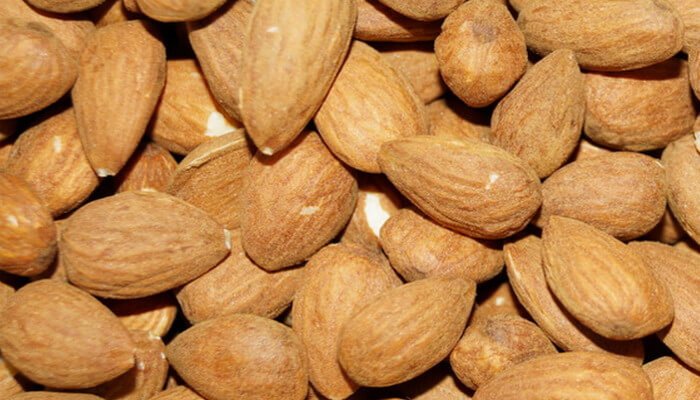The almond harvest season has ended in Uzbekistan. It starts at the end of July with early varieties and ends at the end of September with late varieties, lasting about two months. Despite the low almond harvest this year, the downward trend in prices that started in the third decade of August during the harvest of mid-season varieties continued this week. As of October 7, 2021, the average wholesale prices for almonds are 40% lower compared to those recorded 1,5 months ago.
Given the virtual absence of almond imports in 2021, the reason for an unusual combination of a low harvest and declining prices for almonds in Uzbekistan is quite simple, EastFruit analysts say. Almond harvest expectations were the worst and real volume was better than expected.
Early varieties of almonds bloom in Uzbekistan even before the calendar spring starts. However, abnormal warming in the winter months of 2021 led to early blooming of almond trees. In the southern regions of Uzbekistan, almonds bloomed in mid-February, and a little later blooming started in the central part of the country. The two waves of frost that followed this warming, in late February and mid-March, caused great damage to this year’s harvest of almonds and other nuts and stone fruits. Potential loss of almond yield was estimated from 30% to 90% depending on the region.
Read also: Almonds harvesting in Georgia’s largest orchard (video)
The expectations of the almond market participants for this year’s harvest were the worst and the prices began to rise in the beginning of April. From March 25 to June 17, the average wholesale prices for inshell almonds increased twice from 50,000 UZS/kg ($4.8) to 100,000 UZS/kg ($9.4). Over the next two months – until the 20th of August, prices remained at the same level. Prices began to decline only in the third decade of August and this trend continues. From 19 August to 7 October 2021, the average wholesale prices for inshell almonds fell from 100,000 UZS/kg ($9.4) to 60,000 UZS/kg ($5.6), i.e. by 40%.
Such sharp fluctuations in prices are explained by the greatest damage caused by weather anomalies to the harvest of early almond varieties, as expected, a lesser damage to mid-ripening varieties and even less – to late varieties. Harvesting of early varieties in Uzbekistan begins in late July – early August, but their prices were record high until the 20th of August. Prices began to decline in the third decade of August, when the harvest of mid-ripening almond varieties started. When the harvest of mid-ripening varieties was ending and transition to late-ripening varieties started, the downward price trend continued. In other words, the worst expectations for the almond yield came true for the early varieties, while the mid-ripening and late varieties turned out to be better than expected.
It is noteworthy that the current average wholesale prices for almonds are at the same level as recorded on the same date last year, but 50% higher than on the same date in 2019. This is due to the almond harvest being significantly lower in 2020 than in 2019. In other words, the almond harvest in the country has been lower than usual for the second year.
As for the further dynamics of almond prices, market participants say that a further significant decrease can hardly be expected.
The use of the site materials is free if there is a direct and open for search engines hyperlink to a specific publication of the East-Fruit.com website.




